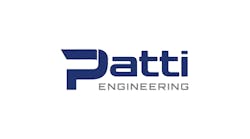[sidebar id =1]Sometimes longtime friends become informal and even official family members, but there's usually a watershed moment when relationships change from one status to another. In the case of Experion Process Knowledge System (PKS), it has long supported electric industry applications along with its traditional process applications, but they usually occupied different silos in their respective control architectures and communication networks.
That’s all changing, according to Stuart Sanderson, principal consultant for Honeywell Process Solutions. He reported that native SCADA protocols now supported by Experion include DNP3 for talking to remote terminal units (RTUs) and intelligent electronic devices (IEDs) in electric and water utilities; IEC 60870 for using supervisory control and data acquisition (SCADA) to managing electric power transmission grids and other geographically distributed electrical systems; and IEC 61850 communication standard for SCADA-based applications in electrical substation automation systems.
"More recently, increasingly hybridized programmable logic controller (PLC), RTU and SCADA solutions have been emerging," said Sanderson, who presented "Experion PKS Control for Electrical Systems" on the third day of Honeywell Users Group Americas 2016 in San Antonio, Texas. "Likewise, IEC 61850 is enabling Experion to combine the electrical control and monitoring/management system (ECMS) with the instrumentation, control and safety system (ICSS) into one system, which simplifies networking and saves significant amounts of time, labor and revenue."
Added electrical control capabilities
Sanderson explained that an ECMS typically consists of the power management system (PMS), substation automation system (SAS), power monitoring and control system (PMCS), electrical network monitoring and control system (ENMCS) and related components. "This allows an ECMS to be divided into the three main groupings: SCADA, electrical substation automation for power distribution and feeder automation control, and power generation control/management," added Sanderson.
In these three areas, Experion's ECMS capabilities include:
- For SCADA—single-line operator station displays, trending and detail pages; real-time monitoring; status, alarms, events/SOE, reporting and trending; and engineering, configuration and troubleshooting analysis.
- For electrical substation automation—breaker operation and control; load shedding/restoration; multiple power source distribution/synchronization; and protection system control.
- For power generation control/management—turbine power generation and optimization; active and reactive power control and auto-synchronizing; multi-generator load sharing management; operational set point control for generators; and transformer load tap changer.
"Monitoring and control of electrical equipment is just as important as the process equipment it powers,” said Sanderson. “So we asked why we had to have standalone islands when Experion could do both jobs and reduce server requirements and costs."
[sidebar id =2]So, how does Experion use IEC 61850 to bring formerly separate electrical and process control systems together? Well, even though ECMS focuses on switchgear control, load shedding and balancing, generator management, electrical control logic and IED engineering, and ICSS concentrates on low-voltage (LV) motor control, process sequences, regulatory control, process safety functions and process control strategies, they also share a bunch of overlapping functions and common devices. These include HMI, historian, alarm configuration and management, supervisory tasks, continuous monitoring and control, cyber security compliance, and engineering and maintenance.
EIM bridges worlds
However, what really enables ICSS to play in the ECMS space is Honeywell's new Ethernet Interface Module (EIM), which complies with IEC 61850, and runs its IEC 61850-3 communication protocol over fault-tolerant Ethernet. "EIM allows a seamless data exchange across clusters of controls, and lets ICSS and ECMS work as one system," added Sanderson. "It also maintains 4-millisecond response time from screw terminal to screw terminal in Ethernet."
At the field level, Experion's integrated control and electrical system links ECMS' control of turbine generators and other high- and medium-voltage equipment and medium-voltage devices with ICSS' control of low-voltage motors, drives, motor control centers, Universal I/O and other components. This unified network also interacts with third-party skids and IEDs, supports EtherNet/IP communications protocol, and delivers data to higher-level engineering stations and enterprise-level servers.
"Experion, EIM and IEC 61850 provide a fully integrated, common-platform architecture serving both process and electrical automation, which delivers seamless power and electrical management information directly to operations and maintenance personnel, while Experion Orion provides a common user interface," said Sanderson.
"This solution also allows peer-to-peer data exchange among process and electrical controllers, and enables the highest level of reliability, safety and security,” said Sanderson. “Honeywell also has an integrated project delivery approach based on our LEAP methodology's leveraging of common standards. All of this reduces cost of ownership for users by supporting standard tools, training and technology."





